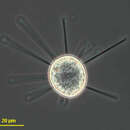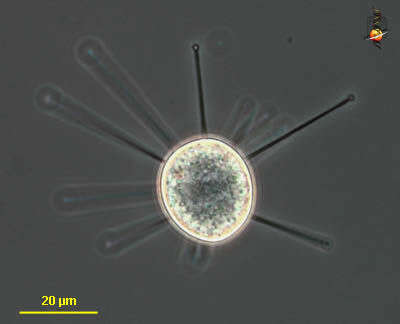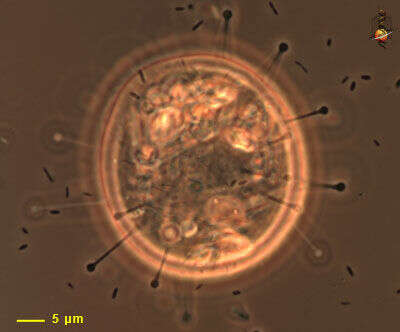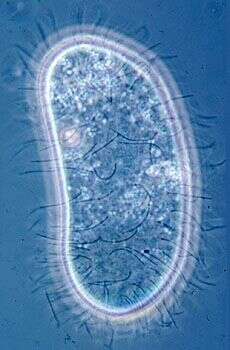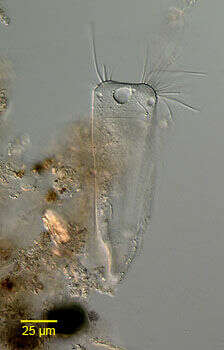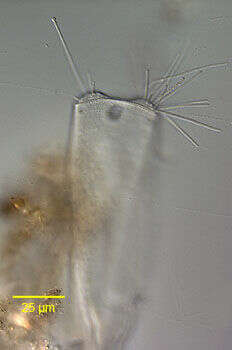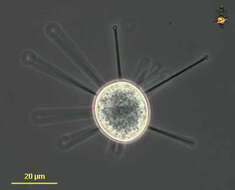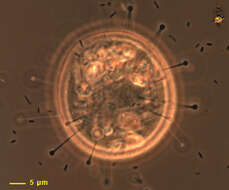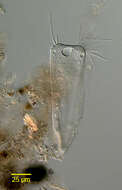-
Prodiscophrya (pro-disc-owe-fry-a) is a suctorian (ciliate without cilia in the trophic stage but with multiple elongated mouths = arms). Arms expanded at apex where they are filled with extrusomes which are used in food capture. Arms not arranged in groups, usually stalked but this cell was observed without a stalk. Phase contrast.
-
This image shows a recently settled cell. There are tentacles which are swollen at the apices. The surface of the cell has a few cilia - remaining from the swimming larva that settled to produce this feeding form. Phase contrast microscopy.
-
Ciliated larval stage of the suctor. Phase contrast micrograph of living cell.
-
Portrait of the discophryid suctorian, Periacineta buckei (Kent,1882).This periphytonic species has a laterally compressed tectinous lorica which is snug against the cell body.The truncate anterior end of the cell protrudes from the slit-like aperture of the lorica.The lorica tapers posteriorly to a narrow attachment with the substarte. A true stalk is absent. Capitate tentacles occur in two fasicles on either side of the anterior end. There are three contractile vacuoles at the anterior end (seen here).The macronucleus is ellipsoid.Swarmers are elongate and flattened.Collected from a freshwater pond near Boise, Idaho.DIC.
-
Portrait of the discophryid suctorian, Periacineta buckei (Kent,1882).This periphytonic species has a laterally compressed tectinous lorica which is snug against the cell body.The truncate anterior end of the cell protrudes from the slit-like aperture of the lorica.The lorica tapers posteriorly to a narrow attachment with the substarte. A true stalk is absent. Capitate tentacles occur in two fasicles on either side of the anterior end. There are three contractile vacuoles at the anterior end.The macronucleus is ellipsoid.Swarmers are elongate and flattened.Collected from a freshwater pond near Boise, Idaho.DIC.
-
Trophic suctorian cell, each tentacle or arm is a mouth, the expanded termini contain extrusomes that will grab hold of prey - mostly other ciliates.

